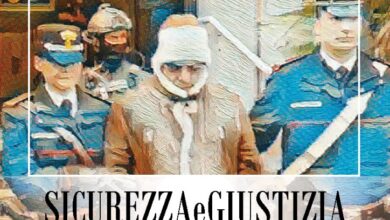The story of Jacob and Joseph from Genesis 37 shows that people have been trying to get away with violent crimes against others since ancient times. However, though there are numerous empirical and anecdotal historical references about staging death scenes, they pale in comparison to the number of available references for other subjects in death investigation and forensic science. Until the past two decades at best, the phenomenon of “crime scene” staging has received relatively no attention by the criminological or law enforcement community. While some notable authors have mentioned staging or written about staging within the body of their works, the phenomenon specifically of crime scene staging behavior has gone profoundly under-researched. And additionally, still today empirical examination of staged death scenes is virtually uncharted territory.
Many types of crimes can be staged, such as by not limited to financial crimes, robberies, car jackings, thefts, etc.; however, LPA’s focus is on murders staged by offenders. This means that LPA solves death cases 98% of the time using Pettler’s The Murder Room death investigation method, which helps determine the correct manner of death, if the event is normal or staged, if legal action pursuant to civil wrongful death is warranted, probable cause in criminal cases, trial theme, and trial strategy. Homicide and murder are not interchangeable terms in the medical field because homicide means one human killed another human, but murder means the killing of that human is legislatively defined as a criminal act. Not all homicides are criminal.
In 2014, I wrote the world’s very first book on the dynamics of staging in homicide cases. At that time, I defined staging behaviors as purposeful acts exhibited by an offender who intends to misdirect an investigation by manipulating physical or verbal evidence to make it appear that his or victim died legitimately in attempt to conceal the evidence that might prove the victim was murdered by the offender.
In 2021, I have expanded my original definition of staging in the form of the world’s first proposed taxonomic arrangement of communicative behaviors otherwise known as “staging behaviors” as a proposed conceptual model for moving forward towards continuation of filling the gaping hole in the literature through eclectically using a multidisciplinary approach to broaden our understanding of this overarching behavioral pattern.
According to Merriam-Webster (2021a), communication is defined as, “a process by which information is exchanged between individuals through a common system of symbols, signs, or behavior” (para. 1). Additionally, Merriam-Webster (2021b) defines staging as, “the act of putting on a play” (para. 2). How fascinating: “the act of putting on a play” (Merriam-Webster, 2021b, para. 2)…and how profoundly accurate when it comes to the killer that stages the death of the victim through “a process by which information is exchanged between individuals through a common system of symbols, signs, or behavior” (para. 1). Staging is the offender playing producer, director, writer, and actor by creating, producing, directing, and playing the starring role throughout the entire “performance.” So now that know staging is communication behavior, we must take the definition up a notch. First, it’s not ‘CRIME SCENE’ staging, it’s more broadly just STAGING because offender staging behavior encompasses all the ways offenders put on a play so to speak, using commonly understood symbols, signs, (i.e., props), a script, scenes, Act 1, 2, 3, so on, and more. Staging communicates offender needs. And staging is not limited to just offenders’ visual communication. Nor is staging limited to only a location at the time of the victim’s death. And in my 20 years of experience solving and clearing murder cases, I have discovered that in general, many people die the way they live just like most killers live the way they kill: that means, killers normally don’t deviate much from their normal drives that are demonstrated in their lives in general when they decide to take the life of another. Those who carry firearms are most likely to kill with firearms. Those carry knives, most often kill with knives. Weaponry is often symbolic of power and control to offenders. And to obtain the payoff of gaining that power and control over the victim, some offenders try to get away with murder by staging the death of the victim. In my proposed taxonomy, staging behavior is divided into three clusters (a) Linguistic Staging, (b) Visual Staging, and (c) Non-Verbal Staging (think “communication”: staging is the way offenders communicate).
Working a staged murder case can feel like “watching a show, movie, or play”…the offender is on stage…acting, directing, and producing. Investigators and experts are his or her captive audience. The offender puts on his/her production to control the captive audience’s narrative and behavior. The offender uses staging to play mind games with “the audience”; and only he/she knows the answer to the riddle…or so he/she thinks. And now, as one of the world’s pioneers in staging research and practice as it relates to murder cases, redefining staging is at the forefront pursuant to blazing a new trail with hope that others choose to join in the plight for moving staging in death case investigatory methodology continually forward.
Pettler’s 2021 proposed working definition of staging:
The conceptual model in Figure 1 is Pettler’s 2021 Staging Taxonomy. Staged murders can be classified as monothematic meaning simplistically staged or polythematic meaning elaborately staged. Arguably, physical evidence might be the first thing that comes to mind when thinking about monothematic or polythematic staging. And while the American criminal justice system is firmly seated on physical evidence often being what tips the scale towards arrest and prosecution, stagers are most often caught by their pre and post victims’-death-behaviors because physical or biological evidence is not always present in every case. Monothematic and polythematic staging behavior can be categorized into three non-mutually exclusive categories.
Cluster 1: Linguistic Staging
According to Merriam-Webster (2021c), linguistics is defined as, “the study of human speech including the units, nature, structure, and modification of language” (para.1). Therefore, Linguistic Staging is the offender’s use of oral or written verbal assets to purposefully misdirect the victim’s death investigation for the sole purpose of offender-benefit and meeting offender needs. Linguistic staging can be classified as major, moderate, or minor. Major linguistic staging is when the offender completely departs from the fact pattern of the case by creating a narrative separate and apart from the evidence and/or reality of which is known to be true. Major linguistic staging most often includes lots of event details that are completely inconsistent with the evidence. Additionally, major linguistic staging can create offender cognitive overload giving rise to significant content variance across multiple statements. Sensationalistic, major linguistic staging is easy to detect because in truth, there is no way to explain the offender’s wild account of events (Vrij, 2008). When it comes to staging murders, “there’s a fiber of truth in the thread of every lie”, which helps to explain the concept of Moderate linguistic staging: one part lie one part truth. One of the reasons offenders get away with lying is because normal people are not expecting and/or are not looking for him/her to lie (Vrij, 2008). In moderate linguistic staging, offenders often end up in cognitive overload as well because they’re exaggerating details and embellishing the facts all while trying to interweave a part of the truth within the web of their lies. In stark contrast to Major Linguistic Staging, Minor Linguistic Staging is the most difficult to detect (Vrij, 2008). Offenders who employ Minor Linguistic staging omit, conceal, and withhold information. If investigators don’t already know what the answers to the questions are, they don’t have any way of knowing what the offender is hiding. Further, minor linguistic staging often occurs when investigators ask direct questions because offenders respond leaving out critical information. Unless investigators really know the victimology and the case extremely well, offenders have a greater of at least temporarily getting away with minor linguistic staging than major or moderate.
Linguistic Staging sub-type oral means spoken words and verbal can mean either spoken or written words, therefore oral staging is the purposeful act of verbal communication that includes stating false information, misleading information, the omission of critical facts, or the concealment of incriminating information that in whole or in part meets the needs of the offender. Oral staging in murder cases often is discovered in 911 Calls, statements (i.e., interviews), and voice mail for examples. The second sub-type of Linguistic Staging is written staging, which can be operationalized as the purposeful act of penned verbal communication that includes stating false information, misleading information, the omission of critical facts, or the concealment of incriminating information that in part meets the needs of the offender. Written staging in murder cases is often discovered in notes like fake suicide notes, letters, receipts, legal documents, banking documents, in digital evidence like text, instant, and messages, and in cyberstaging by posting and commenting in social media. All Linguistic Staging is subject to the aural effects of language. Offenders who employ Linguistic Staging as part or in whole may stage the tone of the mechanism, their idiolect, word choice, and sentence structure. Idiolect is “the language or speech pattern of one individual at a particular period of life” (Merriam-Webster, 2021d, para. 1). Imagine the offender writing or speaking in his or her own personal idiolect manipulating tone, specifically choosing words, and organizing the words to form sentences to meet his or her needs specifically. Verbal staging often supports the offender’s work in the death scene, but it has been my experience that at some point, the lies overwhelm some offenders, and they cannot remember what they did, what they did not do, what they need to say, what they should not say, etc., sometimes all within the same conversation with investigators. This again reinforces why it is so important to be ready, willing, and able to capture this critical information. Innocent people behave totally differently from guilty ones and the more we about the dynamics of human behavior and communication the better we will be at identifying staging behaviors and solving murders (Douglas and Munn, 1992).
Cluster 2: Visual Staging
The second cluster of staging behaviors is Visual Staging. The ways an offender can stage a murder are endless and are only limited by his or her imagination, creativity, enthusiasm, ambition, and physical abilities in relation to the physical stature and condition of the victim (Schlesinger et al, 2012). Visual Staging is not mindless or random work on the part of the offender. As mentioned above, murders can be simplistically or elaborately staged, but the vision the offender has of what the murder should look like is what drives his or her behavior for visually staging the murder from beginning to end. Offenders can add, subtract, or destroy to create their perfect death scene to fake a suicide, accident, natural death, missing person, abduction-murder, botched home invasion-murder, fire-related death and arson, autoerotic death, medically related death, burglary gone wrong, or even to frame someone else. Subtraction Visual Staging includes removing evidence, cleaning up and concealing evidence. Addition Visual Staging includes planning the murder and creating evidence to plant in the death scene. And Destruction Staging includes using fire, water, and breaking evidence to visually stage the death scene. Like Linguistic Staging is subject to aural effects, visual staging is subject to spatiality. Spatiality of visual staging includes how the offender arranges physical object is to meet his or her needs, how the offender occupies space visually with objects and his or her use of space in the death scene or in other locations.
Cluster 3: Non-Verbal Staging
Staging behaviors are deceptive by design. Stagers are shapeshifters. They reframe and reshape their own thought distortion into something more useful like linguistic, visual, and non-verbal elements of murder to meet their needs. The third cluster of Staging behaviors is Non-Verbal Staging. Non-Verbal staging is gestural, meaning the offender’s use of time, proxemics, body language, touch, physical characteristics, and artifacts that are either present or absent from his or her non-verbal behavior. Time refers to how the offender chooses to manipulate time to meet his or her needs. Proxemics refers to how close or far apart the offender stays from other people. Body language includes facial expressions like showing emotion or restraining emotion for example. Touch refers to how the offender employs physical contact with another person to meet his or her needs. Some offenders will show their physical characteristics like tattoos, scars, etc. and some conceal them because it meets their needs. And artifacts of the murder like cuts, bruises, stab wounds, gunshot wounds and the like can be manipulated by the offender to meet his non-verbal communication needs as well.
When it comes to qualitative characteristics of staging, strict dichotomies can send investigations careening on wild goose chases. Staging is not strictly static, it’s generally emergent. Often mixed-level variance is observable, trackable, and measurable across several variables in a murder case. Staging behaviors do not stand alone. Instead, they land along continuous sequences delineated by nominal to ratio level of measurement. Within the scope of the behaviors in Pettler’s Staging Taxonomy is spectrums ranging from Unsophisticated to Sophisticated, Disorganized to Organized, Devoid of Anger to Enraged, plus Pettler’s Power and Control -Anger or +Anger Continuum. Intimicides (i.e., intimate partner homicides) are always centered on the Power and Control Continuum, but some go to the left because they are devoid of anger and some go to the right because they are full of rage.
And finally, staged deaths are the totality of the paradoxical vivid interaction between the victim and the offender juxtaposed against their individual genoevirosocioculturalistic aggregation illustrated by the victim-offender relationship in the scene that results in death scene characteristics and dynamic interrelationships combined with all elements of a particular homicidal pattern giving rise to the development of an offender profile. In other words, how the victim and offender interact, the influence of their cultures, personalities, emotions, thoughts, and behaviors culminate into “Divergent Dualism” …or in short, the fight for life or death. Staged murders can be elusive to the untrained eye…and even more elusive to the untrained mind. Pursuant to training both, Pettler’s Staging Taxonomy can be used as a checklist to help train the eye, ear, and the mind towards increasing solvability probability and clearance rates while decreasing missed staged murders. ©
REFERENCES AND ADDITIONAL READINGS
- Douglas, J. E., & Munn, C. (1992a, February). Violent crime scene analysis: Modus operandi, signature, and staging. FBI Law Enforcement Bulletin, 61(2), 1-10.
- Eke, A. W. (2007). Staging in cases of homicide: Offender, victim, and offence characteristics (Doctoral dissertation). Retrieved from Proquest. (1390310091)
- Ferguson, C. (2011). The defects of the situation: A typology of staged crime scenes. Gold Coast, Queensland. Bond University (Unpublished doctoral thesis).
- Ferguson, C. (2014b, July). Staged homicides: An examination of common features of faked burglaries, suicides, accidents, and car accidents. Journal Police Criminal Psychology. Springer publishing doi: 10.1007/s11896-014-9154-1
- Ferguson, C., & Petherick, W. (2014, October 13). Getting away with murder: An examination of detected homicides staged as suicides. Homicide Studies. Doi. 10.1177/1088767914553099
- Frye v. United States, 1923 Gardner, R. M. (2005). Practical crime scene processing and investigation. Boca Raton, FL: CRC Press/Taylor & Francis Group.
- Geberth, V. J. (1996). The staged crime scene. Law and Order Magazine, 44(2), 45-49.
- Geberth, V. J. (1996a). Practical homicide investigation: Tactics, procedures, and forensic techniques (3rd ed.). Boca Raton, FL: CRC Press/Taylor & Francis Group.
- Geberth, V. J. (2006). Practical homicide investigation: Tactics, procedures, and forensic techniques (4th ed.). Boca Raton, FL: CRC Press/Taylor & Francis Group.
- Gross, H. (1924). Criminal Investigation. London, England: Sweet & Maxwell.
- Hazelwood, R. R., & Napier, M. R. (2004). Crime scene staging and its detection. International Journal of Offender Therapy and Comparative Criminology, 48(6), 744-759. doi:10.1177/0306624X04268298
- Keppel, R. D. & Weis, J. G. (2004). The rarity of unusual dispositions of victim bodies: Staging and posing. Journal of Forensic Science, 49(6), 1-5.
- Merriam-Webster. (2021a, para. 1). Communication. Retrieved on February 25, 2021, from https://www.merriam-webster.com/dictionary/communication
- Merriam-Webster. (2021b, para. 2). Staging. Retrieved on February 25, 2021, from https://www.merriam-webster.com/dictionary/linguistics
- Merriam-Webster. (2021c, para. 1). Linguistics. Retrieved on February 25, 2021, from https://www.merriam-webster.com/dictionary/staging
- Merriam-Webster. (2021d, para. 1). Idiolect. Retrieved on February 25, 2021, from https://www.merriam-webster.com/dictionary/idiolect
- Schlesinger, L. B., Gardenier, A., Jarvis, J. & Sheehan-Cook, J. (2012, April). Crime scene staging in homicide. Journal of Police and Criminal Psychology, 29(1), 44-51.
- Turvey, B. E. (2002). Criminal profiling: An introduction to behavioral evidence analysis (2nd ed.). London, England: Academic Press.
- Turvey, B. E. (2011). Criminal profiling: An introduction to behavioral evidence analysis (4th ed.). London, England: Academic Press.
- Vrij, A. (2008). Detecting lies and deceit: Pitfalls and opportunities, 2nd ed. West Sussex, England: John Wiley & Sons, Ltd.












